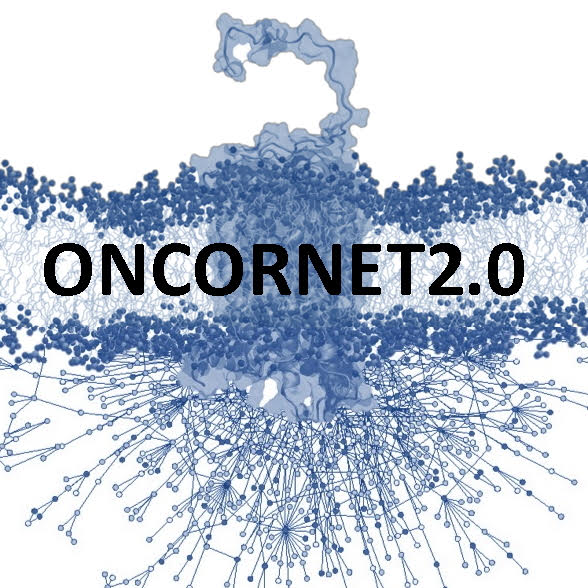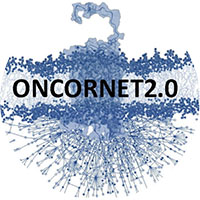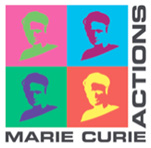Conformational signature of CXCR4/ACKR3 activation in β-arrestin-1 and -2
Early stage researcher 8 (ESR8) project
Supervision: Prof. Dr. Carsten Hoffmann, Dr. Julia Drube
Host: Universitätsklinikum Jena
I – Project proposal:
Our current knowledge is very limitted with respect to GPCR/arrestin interaction and the role of individual GRKs in this process. Most of the GPCR-family members are regulated by only four of the seven members of the GRK-family (namely GRK 2,-3,-5, and -6) and two of the four arrestin proteins that exist in human physiology, namely β-arrestin 1 and β-arrestin 2. For this system of GPCR regulation to be conceivable, β-arrestins require the ability to adopt to a multitude of different receptor activation and phosphorylation states, supposedly facilitated by a high degree of conformational plasticity within β-arrestin.
Aim:
- Characterization of the ligand dependent conformational signature of CXCR4/ACKR3 in β-arrestin-1 and -2 using FRET and BRET sensors for conformational changes in β-arrestin-1/2.
- Characterization of phosphorylation dependent conformational signature of CXCR4/ACKR3 in β-arrestin-1/-2 using site-directed mutagenesis and GRK specific knock-down (CRISPR/Cas9) in HEK293 cells.
- The conformational signatures obtained will further be evaluated for differential signaling and/or localization of the respective chemokine receptor.
Methodology:
We will use a combination of site-directed mutagenesis of identified phosphorylation sites, pharmacological tools (GRK2 or GRK5 inhibition), and knock-down approaches (siRNA or CRISPR/Cas9 for GRKs using HEK293 cells) to study the individual effect of phosphorylation sites in coupling to β-arrestin.
Furthermore, FRET and BRET-based sensors will be developed and employed to study concentration dependent conformational changes of arrestin in real time and living cells. Confocal microscopy (including high-resolution) will be used to study the individual effects of phosphorylation sites in receptor localization.
Planned secondments:
Universidad Autónoma de Madrid (Prof. Federico Mayor)
Vrije Universiteit Amsterdam (Prof. Dr. Martine Smit)
II – Requirement candidate:
Required diploma: MSc degree in life or natural sciences (e.g. biology, biochemistry, molecular biology, pharmacy or related disciplines)
Required expertise: biochemistry, molecular biology
Recommended expertise: Knowledge of basic cell culture, microscopy and imaging techniques (fluorescence of bioluminescence resonance energy transfer). Basic knowledge of ImageJ, Prism, Origin would be a plus. Knowledge of siRNA or CRISR/Cas9 would be a bonus.
Key publications:
S. Nuber, U. Zabel, K. Lorenz, A. Nuber, G. Milligan, A.B. Tobin, M.J. Lohse, C. Hoffmann (2016) β-Arrestin biosensors reveal a rapid, receptor-dependent activation/deactivation cycle. Nature Mar 31;531(7596):661-4; doi: 10.1038/nature17198. Epub 2016 Mar 23.
R.S. Haider, A. Goodbole, C. Hoffmann (2019) To sence or not to sence – New insights from GPCR and arrestin biosensors. Current opinion in Cell Biology, 57: 16-24 doi: 10.1016/j.ceb.2018.10.005
J. Heuninck, C. Perpiñá Viciano, A. Işbilir, B. Caspar, D. Capoferri, S.J. Briddon, T. Durroux, S.J. Hill, M.J. Lohse, G. Milligan, J.-P. Pin, and C. Hoffmann (2019) Context-dependent signalling of CXC chemokine receptor 4 (CXCR4) and atypical chemokine receptor 3 (ACKR3) MolPharm, in press, doi: 10.1124/mol.118.115477
For more information:
Prof. Dr. Carsten Hoffmann – carsten.hoffmann@med.uni-jena.de
Application:
Please send your application to carsten.hoffmann@med.uni-jena.de
Include in heading – ONCORNET2.0 application + ESR#
Follow us on
Contact details
Please contact us at:
e.v.langemeijer@vu.nl
ONCORNET Coordinator
Vrije Universiteit Amsterdam




